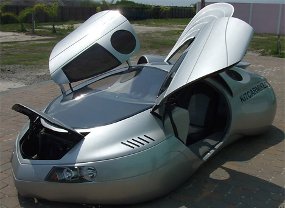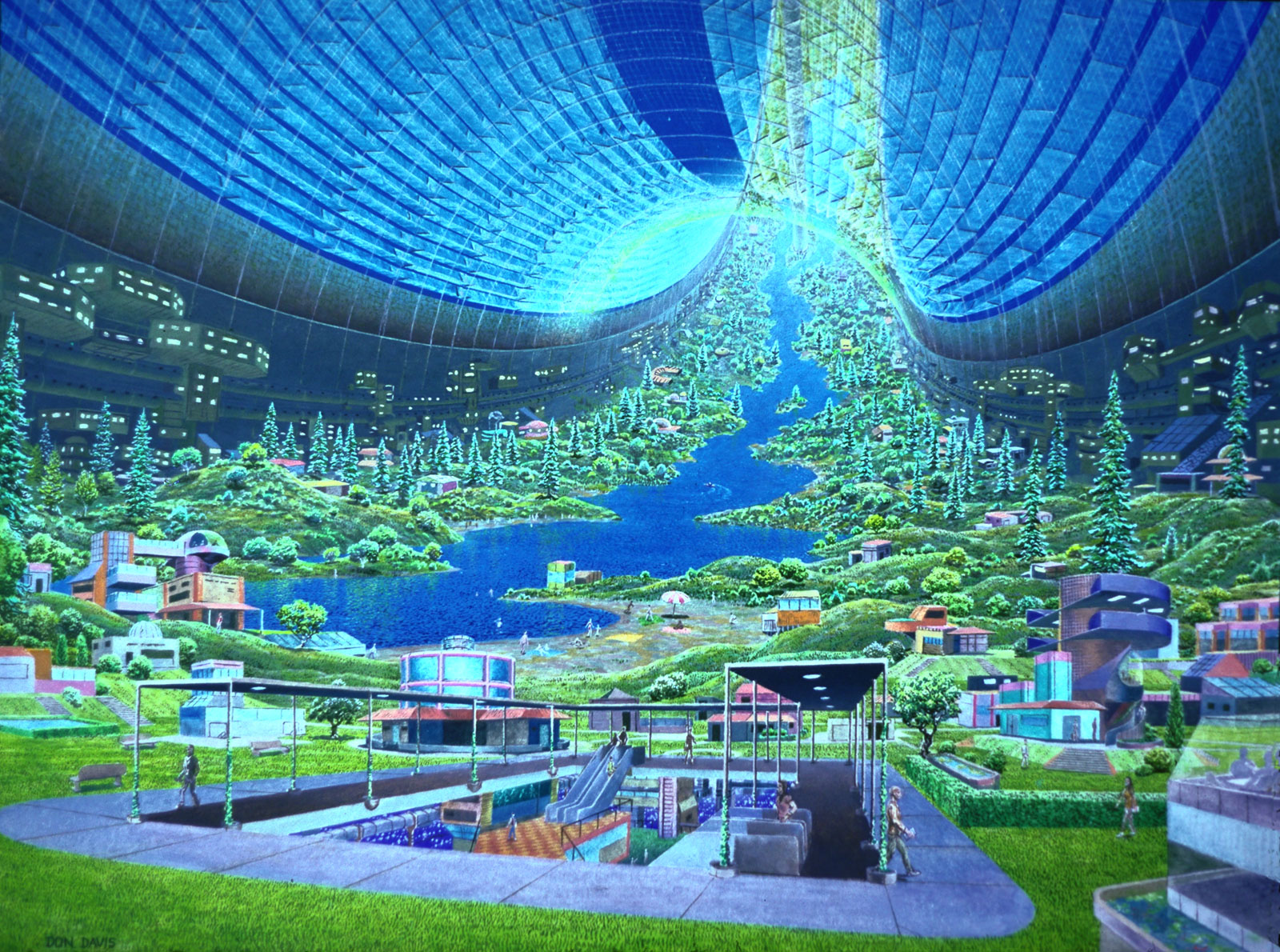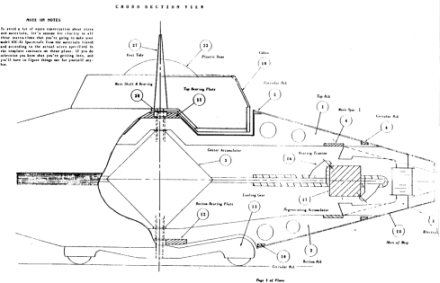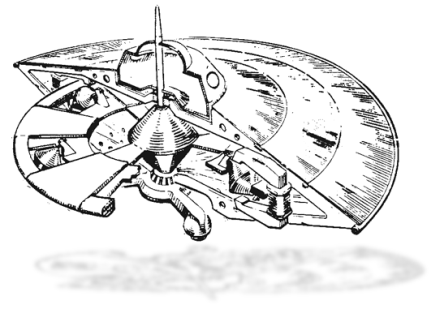Astronomy, the study of the heavens, may be the
most ancient of the sciences, present since the dawn of recorded civilization, with the stars often playing a key role in religion and proving vital to navigation. The invention of the telescope and the discovery of the laws of motion and gravity in the 17th century prompted the
realization that stars were just like the sun, all obeying the same laws of physics. In the 19th century, photography and spectroscopy — the study of the wavelengths of light that objects emit — made it possible to investigate
the compositions and motions of stars from afar, leading to the development of astrophysics. In 1937, the first
radio telescope was built, enabling astronomers to detect otherwise invisible radiation from stars. In 1990, the first space-based optical telescope, the
Hubble Space Telescope, was launched, providing the
deepest, most detailed visible-light view of the universe.
Star Naming Designations
Ancient cultures saw patterns in the heavens that resembled people, animals or common objects — constellations that came to
represent figures from myth, such as Orion the Hunter, a hero in Greek mythology. Astronomers now often use constellations in the naming of stars, with the International Astronomical Union, the world authority for assigning names to celestial objects, officially recognizing 88 constellations that cover the entire sky. Usually, the brightest star in a constellation is has "alpha," the first letter of the Greek alphabet, as part of its scientific name. The second brightest star in a constellation is typically designated "beta," the third brightest "gamma," and so on until all the Greek letters are used, after which numerical designations follow.
Since there are so many stars in the universe, the IAU uses
a different system for newfound stars. Most consist of an abbreviation that stands for either the type of star or a catalog that lists information about the star, followed by a group of symbols. For instance, PSR J1302-6350 is a pulsar, thus the PSR. The J reveals that a coordinate system known as J2000 is being used, while the 1302 and 6350 are coordinates similar to the latitude and longitude codes used on Earth.
A number of stars have possessed names since antiquity —
Aldebaran, for instance, means "the follower" in Arabic, as it seems to follow the Pleiades, or Seven Sisters star cluster, across the sky. These possess scientific names as well — Aldebaran is also known as Alpha Tauri.
Formation
A star develops from
a giant, slowly rotating cloud that is made up entirely or almost entirely of hydrogen and helium. Due to its own gravitational pull, the cloud behind to collapse inward, and as it shrinks, it spins more and more quickly, with the outer parts becoming a disk while the innermost parts become a roughly spherical clump. This collapsing material grows hotter and denser, forming a ball-shaped protostar. When the heat and pressure in the protostar reaches about 1.8 degrees F (1 million degrees C), atomic nuclei that normally repel each other start fusing together, and the star ignites. Nuclear fusion converts a small amount of the mass of these atoms into extraordinary amounts of energy — for instance, 1 gram of mass converted entirely to energy would be equal to an explosion of roughly 22,000 tons of TNT.
Evolution
The life cycles of stars follow patterns based
mostly on their initial mass. These include intermediate-mass stars such as the sun, with half to eight times the mass of the sun, high-mass stars that are more than eight solar masses, and low-mass stars a tenth to half a solar mass in size. The greater a star's mass,
the shorter its lifespan generally is. Objects smaller than a tenth of a solar mass do not have enough gravitational pull to ignite nuclear fusion — some might become failed stars known as
brown dwarfs.
An intermediate-mass star begins with a cloud that takes about 100,000 years to collapse into a protostar with a surface temperature of about 6,750 degrees F (3,725 degrees C). After hydrogen fusion starts, the result is a
T-Tauri star, a variable star that fluctuates in brightness. This star continues to collapse for roughly 10 million years until its expansion due to energy generated by nuclear fusion is balanced by its contraction from gravity, after which point it becomes a
main-sequence star that gets all its energy from hydrogen fusion in its core.
The greater the mass of such a star, the more quickly it will use its hydrogen fuel and the shorter it stays on the main sequence. After all the hydrogen in the core is fused into helium,
the star changes rapidly — without nuclear radiation to resist it, gravity immediately crushes matter down into the star's core, quickly heating the star. This causes the star's outer layers to expand enormously and to cool and glow red as they do so, rendering the star a
red giant. Helium starts fusing together in the core, and once the helium is gone, the core contracts and becomes hotter, once more expanding the star but making it bluer and brighter than before, blowing away its outermost layers. After the expanding shells of gas fade, the remaining core is left,
a white dwarf that consists mostly of carbon and oxygen with an initial temperature of roughly 180,000 degrees F (100,000 degrees C). Since white dwarves have no fuel left for fusion, they grow cooler and cooler over billions of years to become
black dwarves too faint to detect. (Our sun should leave the main sequence in about 5 billion years.)
A high-mass star
forms and dies quickly. These stars form from protostars in just 10,000 to 100,000 years. While on the main sequence, they are hot and blue, some 1,000 to 1 million times as luminous as the sun and are roughly 10 times wider. When they leave the main sequence, they become a bright red supergiant, and eventually become hot enough to fuse carbon into heavier elements. After some 10,000 years of such fusion, the result is an iron core roughly 3,800 miles wide (6,000 km), and since any more fusion would consume energy instead of liberating it, the star is doomed, as its nuclear radiation can no longer resist the force of gravity.
When the iron core of such a star reaches a mass of 1.4 solar masses, the result is a
supernova. Gravity
causes the core to collapse, making the core temperature rise to nearly 18 billion degrees F (10 billion degrees C), breaking the iron down into neutrons and neutrinos. In about one second, the core shrinks to about six miles (10 km) wide and rebounds just like a rubber ball that has been squeezed, sending a shock wave through the star that causes fusion to occur in the outlying layers. The star then explodes in a so-called Type II supernova. If the remaining stellar core was less than roughly three solar masses large, it becomes a
neutron star made up nearly entirely of neutrons, and rotating neutron stars that beam out detectable radio pulses are known as pulsars. If the stellar core was larger than about three solar masses, no known force can support it against its own gravitational pull, and it collapses to form a
black hole.
A low-mass star uses hydrogen fuel so sluggishly that they can shine as main-sequence stars
for 100 billion to 1 trillion years — since the universe is only
about 13.7 billion years old, this means no low-mass star has ever died. Still, astronomers calculate these stars, known as
red dwarfs, will never fuse anything but hydrogen, which means they will never become red giants. Instead, they should eventually just cool to become white dwarfs and then black dwarves.
Binary stars and other multiples
Although our solar system only has one star, most stars like our sun are not solitary, but are binaries where two stars orbit each other a pair, or multiples involving even more stars. In fact, just one-third of stars like our sun are single, while two-thirds are multiples — for instance, the closest neighbor to our solar system, Proxima Centauri, is
part of a multiple system that also includes Alpha Centauri A and Alpha Centauri B. Still, class G stars like our sun only make up some 7 percent of all stars we see — when it comes to systems in general,
about 30 percent in our galaxy are multiple, while the rest are single.
Binary stars develop when two protostars form near each other. One member of this pair can influence its companion
if they are close enough together, stripping away matter in a process called mass transfer. If one of the members is a giant star that leaves behind a neutron star or a black hole, an
X-ray binary can form, where matter pulled from the stellar remnant's companion can get extremely hot and emit X-rays. If a binary includes a white dwarf, gas pulled from a companion onto the white dwarf's surface can fuse violently in a flash called a
nova. At times, enough gas builds up for the dwarf to collapse, leading its carbon to fuse nearly instantly and the dwarf to explode in a Type I supernova, which can outshine a galaxy for a few months.
Characteristics
Astronomers describe star brightness in terms of
magnitude and luminosity.
The magnitude of a star is based on a scale more than 2,000 years old, devised by
Greek astronomer Hipparchus in about 125 BC. He numbered groups of stars based on their brightness as seen from Earth — the brightest ones were called first magnitude stars, the next brightest were second magnitude, and so on up to sixth magnitude, the faintest visible ones. Nowadays astronomers refer to a star's brightness as viewed from Earth as its apparent magnitude, but since the distance between Earth and the star can affect the light one sees from it, they now also describe the actual brightness of a star using the term absolute magnitude, which is defined by what its apparent magnitude would be if it were 10 parsecs or 32.6 light years from Earth. The magnitude scale now runs to more than six and less than one, even descending into negative numbers —
the brightest star in the night sky is Sirius, with an apparent magnitude of -1.46.
Luminosity is the power of a star — the rate at which it emits energy. Although power is generally measured in watts — for instance, the sun's luminosity is
400 trillion trillion watts— the luminosity of a star is usually measured in terms of the luminosity of the sun. For example, Alpha Centauri A is about 1.3 times as luminous as the sun. To figure out luminosity from absolute magnitude, one must calculate that a difference of five on the absolute magnitude scale is equivalent to a factor of 100 on the luminosity scale — for instance, a star with an absolute magnitude of 1 is 100 times as luminous as a star with an absolute magnitude of 6.
The brightness of a star
depends on its surface temperature and size.
Stars come in a range of colors, from reddish to yellowish to blue. The color of a star
depends on surface temperature.
A star might appear to have a single color, but actually emits
a broad spectrum of colors, potentially including everything from radio waves and infrared rays to ultraviolet beams and gamma rays. Different elements or compounds absorb and emit different colors or wavelengths of light, and by studying a star's spectrum, one can divine what its composition might be.
Astronomers measure
star temperatures in a unit known as the kelvin, with a temperature of zero K equaling minus 273.15 degrees C, or minus 459.67 degrees F. A dark red star has a surface temperature of about 2,500 K (2,225 degrees C and 4,040 degrees F); a bright red star, about 3,500 K (3,225 degrees C and 5,840 degrees F); the sun and other yellow stars, about 5,500 K (5,225 degrees C and 9,440 degrees F); a blue star, about 10,000 K (9,725 degrees C and 17,540 degrees F) to 50,000 K (49,725 degrees C and 89,540 degrees F).
The surface temperature of a star depends in part on its mass and
affects its brightness and color. Specifically, the luminosity of a star is proportional to temperature to the fourth power. For instance, if two stars are the same size but one is twice as hot as the other in kelvin, the former would be 16 times as luminous as the latter.
Astronomers generally measure the size of stars in terms of the radius of our sun. For instance, Alpha Centauri A
has a radius of 1.05 solar radii (the plural of radius). Stars range in size from neutron stars, which can be only 12 miles (20 kilometers) wide, to supergiants roughly 1,000 times the diameter of the sun.
The size of a star
affects its brightness. Specifically, luminosity is proportional to radius squared. For instance, if two stars had the same temperature, if one star was twice as wide as the other one, the former would be four times as bright as the latter.
Astronomers represent the mass of a star in terms of the
solar mass, the mass of our sun. For instance,
Alpha Centauri A is 1.08 solar masses.
Stars with similar masses might not be similar in size because they have different densities. For instance, Sirius B is roughly the same mass as the sun, but is 90,000 times as dense, and so is only
a fiftieth its diameter.
The mass of a star
affects surface temperature.
Stars are spinning balls of roiling, electrically charged gas, and thus typically generate magnetic fields. When it comes to the sun, researchers have discovered its magnetic field can become
highly concentrated in small areas, creating features ranging from sunspots to spectacular eruptions known as flares and coronal mass ejections. Directly detecting the magnetic fields of other stars, however,
can be difficult.
The
metallicity of a star measures the amount of "
metals" it has — that is, any element heavier than helium.
Three
generations of stars may exist based on metallicity. Astronomers have not yet discovered any of what should be the oldest generation, Population III stars born in a universe without "metals." When these stars died, they released heavy elements into the cosmos, which Population II stars incorporated relatively small amounts of. When a number of these died, they released more heavy elements, and the youngest Population I stars like our sun contain the largest amounts of heavy elements.
Classification
Stars are typically
classified by their spectrum in what is known as the Morgan-Keenan or MK system. There are eight spectral classes, each analogous to a range of surface temperatures — from the hottest to the coldest, these are O, B, A, F, G, K, M, and L. Each spectral class also consists of 10 spectral types, ranging from the numeral 0 for the hottest to the numeral 9 for the coldest.
Stars are also
classified by their luminosity under the Morgan-Keenan system. The largest and brightest classes of stars have the lowest numbers, given in Roman numerals — Ia is a bright supergiant; Ib, a supergiant; II, a bright giant; III, a giant; IV, a subgiant; and V, a main sequence or dwarf.
A complete MK designation includes both spectral type and luminosity class — for instance, the sun is a
G2V.
Stellar Structure
The structure of a star can often be thought of as
a series of thin nested shells, somewhat like an onion.
A star during most of its life is a main-sequence star, which
consists of a core, radiative and convective zones, a photosphere, a chromosphere and a corona. The core is where all the nuclear fusion takes places to power a star. In the radiative zone, energy from these reactions is transported outward by radiation, like heat from a light bulb, while in the convective zone, energy is transported by the roiling hot gases, like hot air from a hairdryer. Massive stars that are more than several times the mass of the sun are
convective in their cores and radiative in their outer layers, while stars comparable to the sun or less in mass are radiative in their cores and convective in their outer layers. Intermediate-mass stars of spectral type A may be radiative throughout.
After those zones comes the part of the star that radiates visible light, the
photosphere, which is often referred to as the surface of the star. After that is the chromosphere, a layer that looks reddish because of all the hydrogen found there. Finally, the outermost part of a star's atmosphere is the corona, which if super-hot might be
linked with convection in the outer layers.






























